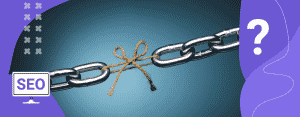The business world has entered a new dimension and, to adapt to it, we need to understand the concept of Product-led Growth (PLG).
Have you heard about it?
It is a valuable strategy (and philosophy) that allows us to meet the high standards of today’s users, who expect real and sustainable solutions to their problems.
Besides, it is a very effective approach when positioning a product to generate brand credibility in the market and add more value to the customers acquired.
To understand more about PLG and its potential, keep reading and learn:
- What is Product-led Growth?
- How did this concept emerge and what is its current role?
- What changes and key actions are needed to implement PLG?
- Are there metrics to follow up on Product-led Growth?
- What are the benefits of PLG in business growth?
- Are there proven results of the PLG application?
Enjoy!
What is Product-led Growth?
This emerging concept refers to the way companies develop customer acquisition, retention, and expansion strategies, which revolve around the product.
Product-led Growth is a paradigm shift, which leaves behind the philosophy of growth based on marketing and sales, replacing it with a culture driven by the product itself.
So, in a general way, we can affirm that PLG is a launch strategy that takes advantage of the value generated by the product to reach a solid position in the near future.
But it is a strategy that is neither simple nor common!
This is because it is based on a type of virtuous circle, where, as the user interacts with the platform or software in question, it starts to adapt to that particular person’s characteristics.
Thus, it offers a better and more personalized experience.
How did this concept emerge and what is its current role?
OpenView Venture Partners, a venture capital firm, was responsible for creating the term Product-led Growth. The objective was to give a specific name to a growing trend in the market.
Undoubtedly, from now on, with the popularization of this term and the study of this modern philosophy by experts, the growth strategies led by the product will improve and have a greater impact on the market.
However, the truth is that digital transformation, Digital Marketing, and market behavior, in general, had already given certain signs that the product would become the central axis of customer experience and interaction among the players of the corporate ecosystem.
In recent years, experts have focused on developing processes and systems that allow us to get to know the customer better in order to offer increasingly personalized services that solve their specific needs and concerns.
Also, business models directly related to the Product-led Growth concept have been consolidated.
Check some of them out!
Freemium
A company based on a freemium model offers software, systems, and services in general for free, but with the possibility of subscribing to paid plans to access more resources and benefits.
This way, people can choose features and tools they really need. As they use the product, it becomes more intuitive, practical, and personalized.
SaaS
These are businesses that develop and sell software. Therefore, they are called Software as a Service (SaaS) companies.
These organizations often perform maintenance and data security tasks on the platforms and digital systems they make available to their customers.
At the same time, they advise and provide ongoing user support.
Moreover, in a SaaS company, the contracts are long term, so that the user acquires a lengthy subscription of the software (which is always stored in the cloud in these cases) and can gradually advance their experience with the platform.
This business model includes tutorials, free demos, and other features that allow users to trial the digital tool to identify the product’s real value before purchasing or subscribing to “premium” plans.
This leads us to conclude that Product-led Growth emerges as the next level in an already common trend of customization and improvement of the customer experience, which places the product as the fundamental axis.
It responds to the emergence of a much more demanding public, empowered by the Internet, artificial intelligence, and the multiple alternatives within its reach.
Organizations that have studied the market in recent years, such as Forrester and Salesforce, have found solid data on the growing level of user expectations and the sharp inclination towards digital.
In this sense, some of the most impressive statistics are:
- 75% of consumers prefer to buy through an application or website;
- 80% of people prefer to do business with companies that guarantee customization;
- 52% of people would change brands if the services and products they receive were not customized;
- 21% of users open an application at some time and, if they are not captivated immediately, they will not consider it again.
As you can see, Product-led Growth currently assumes the responsibility and role of satisfying all these needs, placing the product at the center of acquisition, loyalty, and growth strategies.
What changes and key actions are needed to implement PLG?
Product-led Growth is perfectly applied in different corporate contexts.
Obviously, it is especially useful and necessary in SaaS, startups, and several companies with an interactive character and direct relationship with the digital world.
These companies serve audiences with new consumer paradigms, prioritizing innovation, modernity, and customization. In addition, users who demand agile, intuitive, and purely digital services.
Any company that really wants to position the product as a protagonist, and promote its growth through it, must prepare itself for important and powerful changes.
Eliminate intermediation
For a product to offer value, the user mustn’t have to deal with several intermediaries to be able to explore it and discover its features and resources.
The traditional seller of cunning words and social skills may no longer be such a desired professional in the future.
The trends that will drive the consolidation of Product-led Growth are the direct testing of products, the automatic personalization of services through Machine Learning, and the feedback between the human being and the software.
This way, employees and technology salespeople will be able to concentrate on tasks oriented towards planning, customer study, and strategy.
Applying Design Thinking
One of the fundamental aspects of Product-Led Growth is to effectively solve customers’ problems, which leads us to a change in mentality.
It is not a matter of convincing and selling at all costs, but of experiencing a process of research, learning and, development that allows the commercialization of a product that can be a channel of attraction and growth.
In this sense, Design Thinking is very useful. This mentality, born in graphic design, has crossed this area and has become a business philosophy, based on solving problems for one or several people through the conception of a product.
Although it has a very simple explanation, it’s a complex process, composed of different steps, like:
- to empathize (to put yourself in the client shoes);
- defining (identifying the problems to be solved);
- create (design the idea to solve the problems);
- prototyping (making a prototype of the product that will be capable of solving the problem);
- evaluate (consider all available information to determine the real usefulness of the product).
Of course, when conceptualizing a product or a digital platform for the company, keep in mind the best design practices in terms of user interface and experience.
The intuitiveness and attractiveness of the tool that will offer the service depend on it.
Marketing paradigm changes
This is one of the main points for the correct implementation of Product-led Growth.
It is useless to say that we will position the product as the main focus if we keep the same traditional marketing paradigms.
As it is a launch strategy, the PLG must answer the fundamental marketing questions when presenting a product in the market, but from a new and different perspective.
Who will buy the product?
Here, you should be clear that you will not sell to simple consumers or buyers, but to users who demand a good experience, satisfaction, and resolution of their problems.
Where will the product be distributed?
Advertising in the mass media is not particularly big for PLG at this point. What is really important is to make users happy so that they promote you organically.
Remember that in the age of the Internet, word of mouth marketing can be as effective as the most expensive advertising campaign.
Why will the product be purchased?
Here you should not prioritize the price of the product or its quality from a generic point of view.
The focus is on the fact that the user will purchase the product because it is reliable and offers value. Above all, because it can solve the user’s problem.
Remember: people do not want the best product on the market, but the one that best suits their interests and meets their needs.
How will they buy the product?
Among other things, this answer depends on the type of company and its target audience.
When implementing Product-led Growth, the goal is to allow the user to have the possibility to buy within the product itself or, at least, after trying it out beforehand.
Integration between departments
If you have followed us so far, you may have noticed that PLG is a new and challenging methodology.
It changes the order that many companies traditionally follow when doing things.
For this reason, it is essential to integrate virtually all members of the organization. PLG is a value that must be inserted into the organizational culture and mindset of managers and employees.
It is especially important that the Marketing, Sales, Technology, and Customer Success teams interact. Once together, they all embrace the areas of interest of the Product-Led Growth philosophy.
The Marketing and Sales teams have a solid knowledge of the user, their pains, needs, and problems, as well as the results needed to make the product profitable.
Meanwhile, Technology ensures that the essential aspects mentioned above are met, such as disintermediation.
At the same time, Customer Success follows the actions of all other areas and customer behavior to ensure satisfaction and eliminate friction points.
Are there metrics to follow up on Product-led Growth?
As with all attraction and growth strategies, for PLG implementation to be effective, it is necessary to closely monitor and analyze different types of metrics. Below, we list some.
Acquisition
This is the number of users who sign up to test and try the product for free.
It can be measured from the traffic to the product’s website and the number of users who signed up for the free version, for example.
Activation (or conversion)
It is the rate of users who really found value in the product and decided to pay for it.
Reference
As we mentioned, “word of mouth” in Product-led Growth is very important.
Therefore, it is essential to follow the number of new users recruited by the current ones through references and recommendations.
You can ask incoming clients if they have approached you based on a friend’s recommendation, for example. At the same time, you should track product mentions on social media, forums, and blogs to monitor their community’s popularity.
Another key action to measure the reference level is to analyze traffic to the landing pages and product pages in Google Analytics, identifying how many users arrived through the “Referral” channel.
Retention
It’s the number of users who continue to use the product, including those who are paying for the product and those who continue to use it in its free version.
This monitoring allows you to know how much value users are seeing in the tool.
You can also keep them close to you to provide sufficient incentives for those who have not yet turned themselves into effective customers.
Among the metrics associated with retention, Lifetime Value (LTV) stands out as it measures the customer’s lifetime value.
High LTV is not only synonymous with retention: it also indicates that the product is actually generating value.
Therefore, the user increasingly hires a more extensive version of the product. In freemium companies, especially, this metric is critical.
PQL (Product Qualified Lead)
This is the most unique metric in PLG. Traditional Inbound Marketing processes include MQL (Marketing Qualified Lead) and SQL (Sales Qualified Lead), which indicate the compatibility between the potential customer and the company’s buyer persona.
But in the case of the product as the center of the acquisition strategy, the situation changes. The company’s objective is to identify the level of value that the user sees in their experience with the platform.
Therefore, a PQL is a qualified lead for the product, i.e., someone who has performed a certain group of actions in the software, demonstrating the maturity they are acquiring in their experience.
The more the user executes the actions provided by the tool, the more it is noticeable that it is useful.
This type of follow-up allows you to know the ideal moment to offer a paid plan with new features or greater use space.
What are the benefits of PLG in business growth?
Following the fundamental steps to develop PLG as a strategy and constantly analyzing performance through metrics are synonyms of success in its implementation.
See what the advantages are!
Attracting users before they make a decision
Product-Led Growth is indeed a sustainable strategy. Therefore, its results do not necessarily come in the short term. But you will be surprised at how quickly your customer base and business contacts can grow by adopting and implementing this philosophy.
By putting the product at the center of the strategy, you will attract many users interested in experimenting and interacting before making a purchase decision.
This is a great advantage. If the product really represents a solution for them, once they test it, the chances of choosing your product are very high.
Business value growth
An Openview study, which compared companies well positioned in their respective markets, showed that those that practice PLG are 2.2 times more valuable than those that do not.
Yes, a company that adopts Product-led Growth may grow faster than those following traditional patterns and principles.
However, this is not the main aspect when we talk about the value growth of companies that use PLG. The real secret is the sustainability that this strategy guarantees, as you will see in the next paragraphs.
Sustainable results
Growing through the product is also ensuring that you will not take any steps backward. The results achieved are lasting and do not add any kind of setback.
Thanks to PLG, companies attract qualified users, have the necessary mechanisms to retain them, and, moreover, promote the increase of their value over time.
In turn, the company’s product is transparently positioned in the market, based on recommendations and references from hundreds or even thousands of satisfied and happy users.
Higher revenue per employee
Another great benefit, which we can also relate to sustainable growth, is that, in many cases, the PLG does not require payroll extensions.
Thus, companies increase their income levels without having to increase their expenses due to higher wage costs.
Therefore, each employee can be valued with greater intensity, encouraging them to do more with less, reflecting the PLG mentality applied to business advancement.
Are there proven results of the PLG application?
Many companies that have practiced marketing and attraction oriented by the product have obtained great results with this philosophy.
That’s why it is now consolidated as a concept through the Product-led Growth.
Here are some examples of success.
Pinterest allows users to create and manage image collections through customized and thematic panels.
In this way, putting its tool at the center of the attraction process and making it increasingly practical, close and intuitive for people, Pinterest has reached more than 250 million active users, with real benefits exceeding $500 million.

Warby Parker
Warby Parker is a brand of glasses that has achieved success by focusing on free demonstrations flexibly and simply. Its free app store application, called Home Try-On, is the main sales channel.
It allows users to try digital versions of their glasses through augmented reality. This application is not just another cliché filter for people to play with their looks.
Through Face ID technology, the glasses are displayed in 3D, which increases realism and makes users buy once they are convinced that the model looks good on their face.
It’s that simple, without middlemen or salesmen! Warby Parker has put its products at the center of the strategy, with intuitive and personalized software, and has an average annual revenue of almost $300 million.
See how the application works in this video:
Slack
In B2B trade, there are also good examples of the reach and results of Product-led Growth.
In Slack’s case, the company has established itself as one of the best positioned SaaS companies worldwide.
Slack has eliminated intermediation and put its collaborative work platform and project management first, characterized by its ability to mold itself to each company’s needs.
Following this philosophy, Slack has managed (in less than seven years) to sell its product to 43% of the top 100 companies on the Fortune list, which groups the 500 largest publicly-traded companies in the United States.

For being a new concept and still little explored by the market, we recommend that you start to explore this strategy as soon as possible and implement Product-led Growth.
This can provide your business with a great competitive advantage.
If you have or plan to start a SaaS venture, the PLG concept will have a special value. If, in addition, you match it with the best marketing strategies for software-as-a-service companies, your results will be extraordinary.
If you want to know more about the concept, be sure to watch the recording of our webinar jam session: How to Innovate Content Marketing with a Product-Led Approach – An interview with Joe Chernov.









